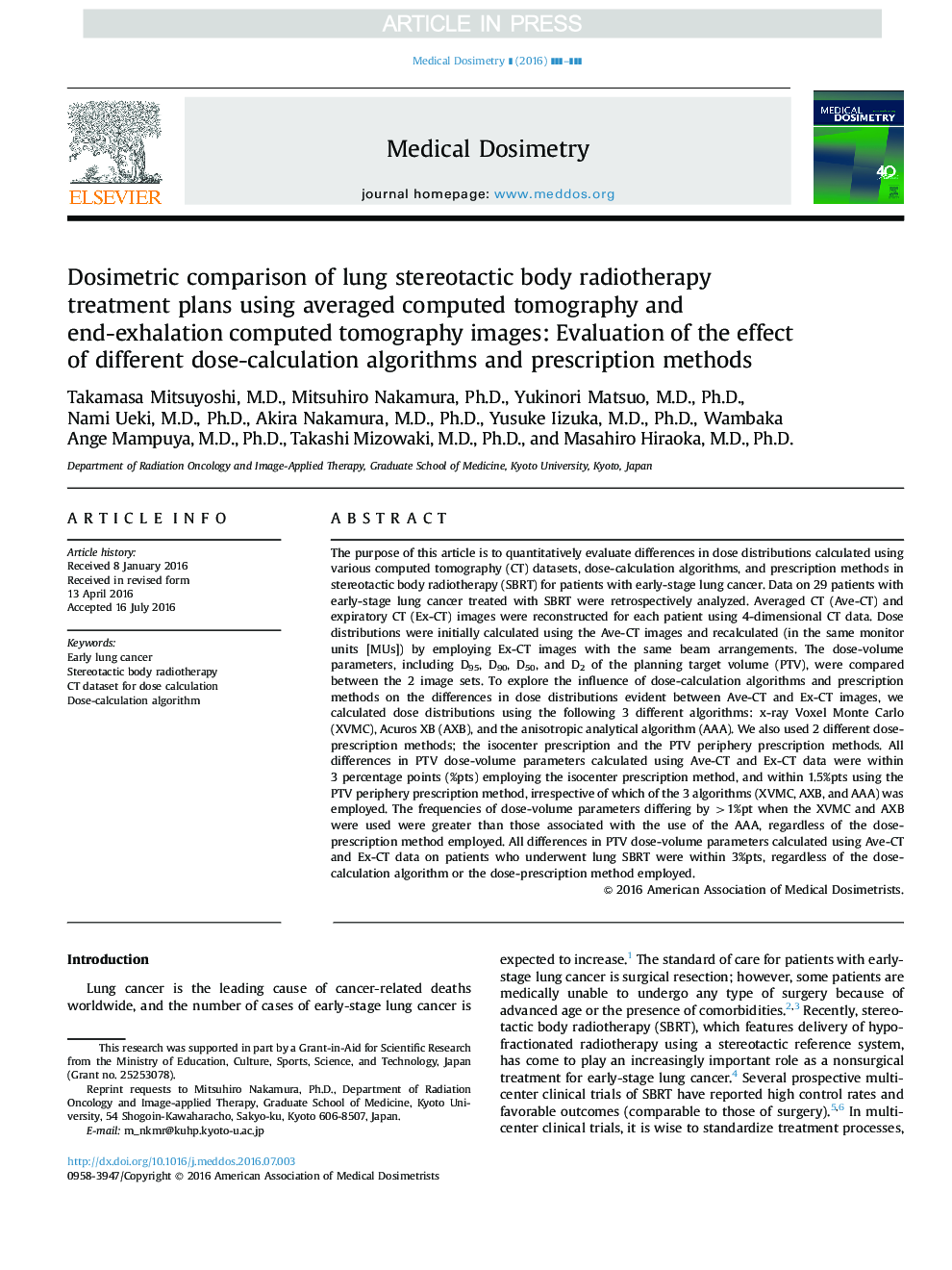| Article ID | Journal | Published Year | Pages | File Type |
|---|---|---|---|---|
| 5498137 | Medical Dosimetry | 2016 | 5 Pages |
Abstract
The purpose of this article is to quantitatively evaluate differences in dose distributions calculated using various computed tomography (CT) datasets, dose-calculation algorithms, and prescription methods in stereotactic body radiotherapy (SBRT) for patients with early-stage lung cancer. Data on 29 patients with early-stage lung cancer treated with SBRT were retrospectively analyzed. Averaged CT (Ave-CT) and expiratory CT (Ex-CT) images were reconstructed for each patient using 4-dimensional CT data. Dose distributions were initially calculated using the Ave-CT images and recalculated (in the same monitor units [MUs]) by employing Ex-CT images with the same beam arrangements. The dose-volume parameters, including D95, D90, D50, and D2 of the planning target volume (PTV), were compared between the 2 image sets. To explore the influence of dose-calculation algorithms and prescription methods on the differences in dose distributions evident between Ave-CT and Ex-CT images, we calculated dose distributions using the following 3 different algorithms: x-ray Voxel Monte Carlo (XVMC), Acuros XB (AXB), and the anisotropic analytical algorithm (AAA). We also used 2 different dose-prescription methods; the isocenter prescription and the PTV periphery prescription methods. All differences in PTV dose-volume parameters calculated using Ave-CT and Ex-CT data were within 3 percentage points (%pts) employing the isocenter prescription method, and within 1.5%pts using the PTV periphery prescription method, irrespective of which of the 3 algorithms (XVMC, AXB, and AAA) was employed. The frequencies of dose-volume parameters differing by >1%pt when the XVMC and AXB were used were greater than those associated with the use of the AAA, regardless of the dose-prescription method employed. All differences in PTV dose-volume parameters calculated using Ave-CT and Ex-CT data on patients who underwent lung SBRT were within 3%pts, regardless of the dose-calculation algorithm or the dose-prescription method employed.
Related Topics
Physical Sciences and Engineering
Physics and Astronomy
Radiation
Authors
Takamasa M.D., Mitsuhiro Ph.D., Yukinori M.D., Ph.D., Nami M.D., Ph.D., Akira M.D., Ph.D., Yusuke M.D., Ph.D., Wambaka Ange M.D., Ph.D., Takashi M.D., Ph.D., Masahiro M.D., Ph.D.,
